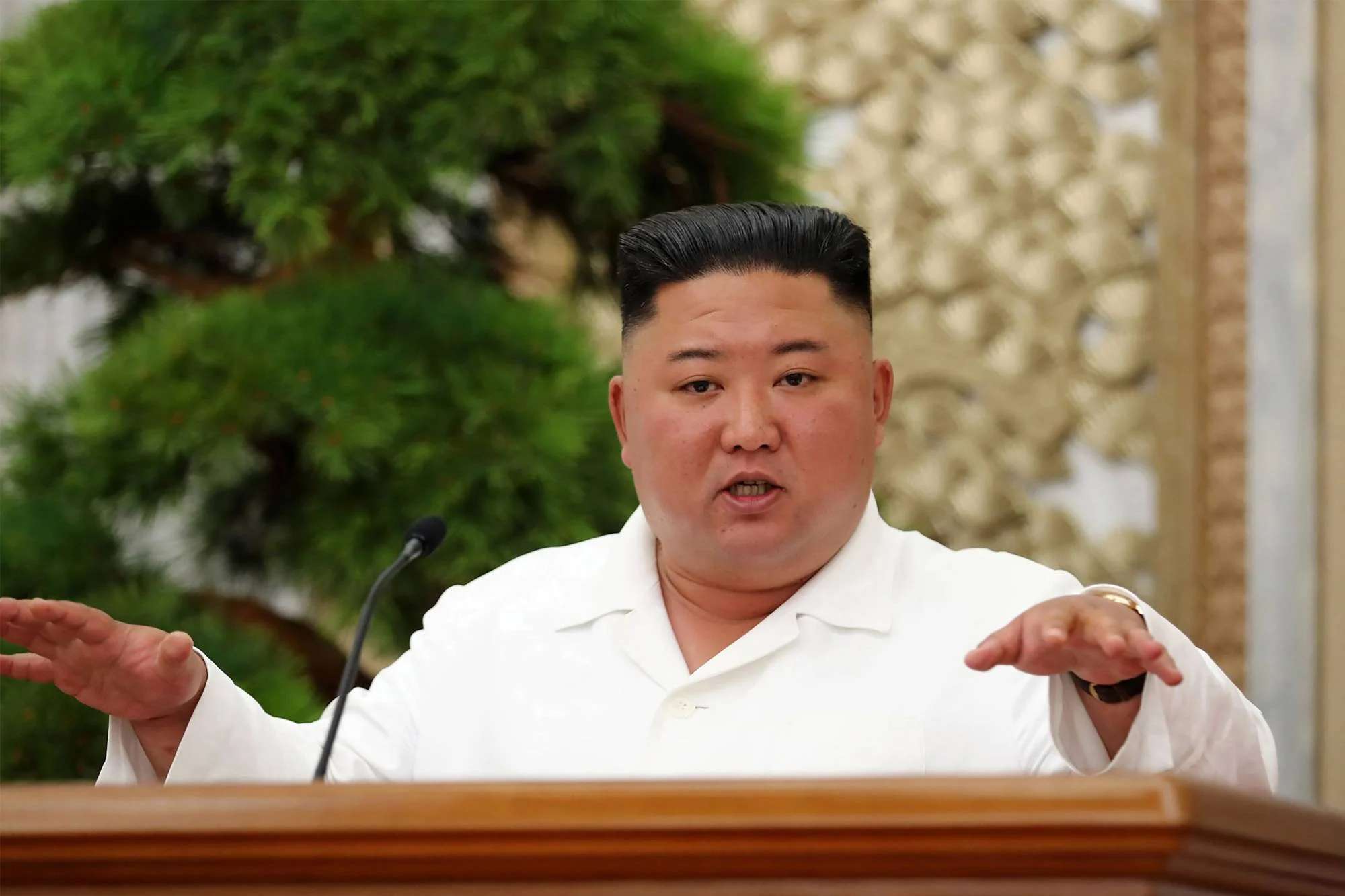Tropical Storm Khanun Sweeps Across East Asia, Threatening the Kim Dynasty Portraits
Tropical Storm Khanun, initially a typhoon before weakening, has wreaked havoc across East Asia, impacting Japan, South Korea, and looming over North Korea. As the storm’s path continues towards the capital city of Pyongyang, North Koreans face the challenging task of safeguarding not only their lives but also the revered symbols of the ruling Kim dynasty.
North Korea’s Vulnerability to Natural Disasters
The isolated and economically strained North Korea is particularly susceptible to the adverse effects of natural disasters due to its frail infrastructure and deforested landscapes. The country’s weakened resilience intensifies the potential damage caused by torrential rains, flooding, and other climatic disruptions.
Crisis Management: Protecting the Kim Dynasty Legacy
Amidst the impending storm, North Korea’s ruling party and military have issued directives for flood-mitigation measures and crop protection. However, the paramount focus highlighted by Pyongyang’s official Rodong Sinmun is the safeguarding of propaganda portraits depicting the revered Kim dynasty. These portraits, statues, mosaics, and murals hold immense significance in North Korean culture and political identity.
The Significance of Kim Dynasty Portraits
The ruling Kim dynasty’s images, including those of leader Kim Jong Un’s father and grandfather, are omnipresent throughout North Korea, adorning homes and offices across the nation. The state places significant importance on preserving and upholding the visual representation of its leadership, making the protection of these symbols an imperative duty during times of crisis.
North Korea’s Preparedness and Response
North Korean authorities, through the Korean Central News Agency, have initiated a comprehensive campaign to address the challenges posed by the abnormal climate caused by Tropical Storm Khanun. The issuance of warnings for various hazards, such as strong winds, downpours, tidal waves, and sea alerts, showcases the nation’s proactive approach to disaster preparedness.
Agricultural Resilience in the Face of Adversity
Efforts to safeguard crops against the storm’s impact have been spearheaded by the agriculture sector, an essential lifeline for the country. North Korea’s history of periodic famines emphasizes the critical importance of protecting its agricultural resources to ensure food security and prevent humanitarian crises.
Tropical Storm Khanun’s Path of Destruction
As Khanun traverses across South Korea, it leaves behind a trail of destruction, disrupting transportation networks, closing schools, and causing damage to infrastructure. Although South Korea has been more equipped to handle such storms, the challenges it poses highlight the region’s vulnerability to natural disasters.
North Korea’s Resilience and the Path Forward
As Tropical Storm Khanun inches closer to North Korea’s capital, Pyongyang, the nation’s resilience and ability to protect its cultural and political heritage come to the forefront. The efforts to safeguard Kim dynasty portraits and monuments serve as a testament to the unshakable commitment of the North Korean people to preserve their identity, even in the face of environmental adversity. While the storm’s impact remains uncertain, the protection of these symbols underscores the enduring strength of the Kim dynasty and its influence on the nation’s collective spirit.
Read the top 10 best bikes of 2024
FAQs
Q: What is Tropical Storm Khanun and where is it located?
A: Tropical Storm Khanun was previously a typhoon that weakened while sweeping across East Asia. It impacted Japan and South Korea before heading towards North Korea. As of today, January 7, 2024, the storm has likely passed through North Korea.
Q: What kind of damage has Khanun caused?
A: Khanun brought heavy rains, strong winds, and flooding to the regions it hit. In South Korea, the storm disrupted transportation, closed schools, and damaged infrastructure. The full extent of the damage in North Korea is still unknown.
Q: Why is North Korea particularly vulnerable to natural disasters?
A: North Korea’s weak infrastructure and deforested landscapes make it more susceptible to the effects of storms and floods. Additionally, the country is economically strained and lacks resources to effectively mitigate damage.
Q: How is North Korea preparing for Khanun?
A: North Korean authorities have issued warnings about the storm and implemented flood-mitigation measures and crop protection efforts. They are also taking steps to safeguard propaganda portraits and monuments depicting the Kim dynasty.
Q: Why are the Kim dynasty portraits so important in North Korea?
A: The portraits of Kim Il-sung, Kim Jong-il, and Kim Jong-un are omnipresent in North Korea and serve as symbols of the regime’s legitimacy and power. Protecting these portraits is seen as a vital duty during times of crisis.
Q: What is the long-term outlook for North Korea’s resilience to natural disasters?
A: North Korea needs to invest in infrastructure improvements and sustainable forestry practices to better withstand future storms and floods. Additionally, international cooperation and assistance could play a role in strengthening the country’s disaster preparedness and response capabilities.

